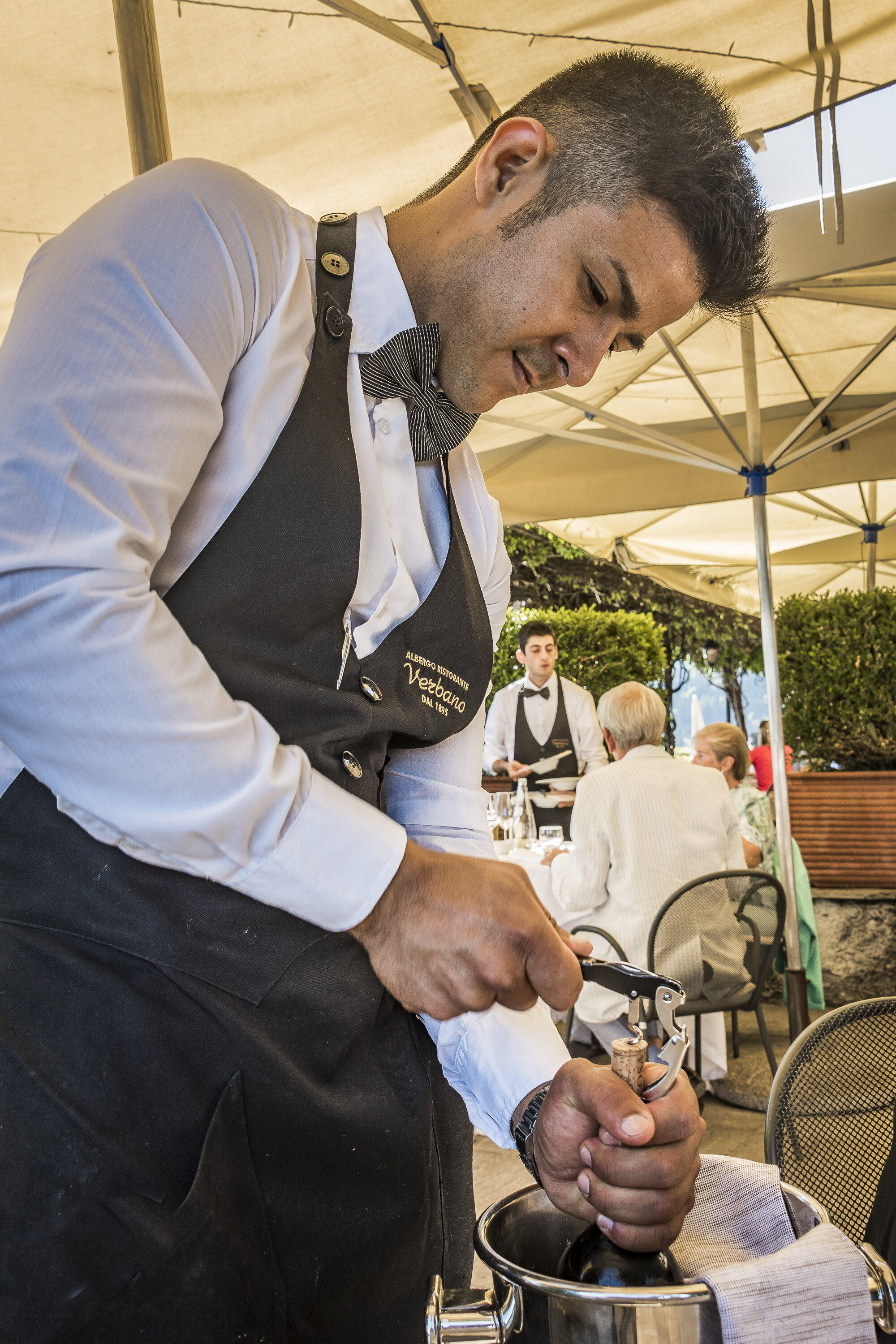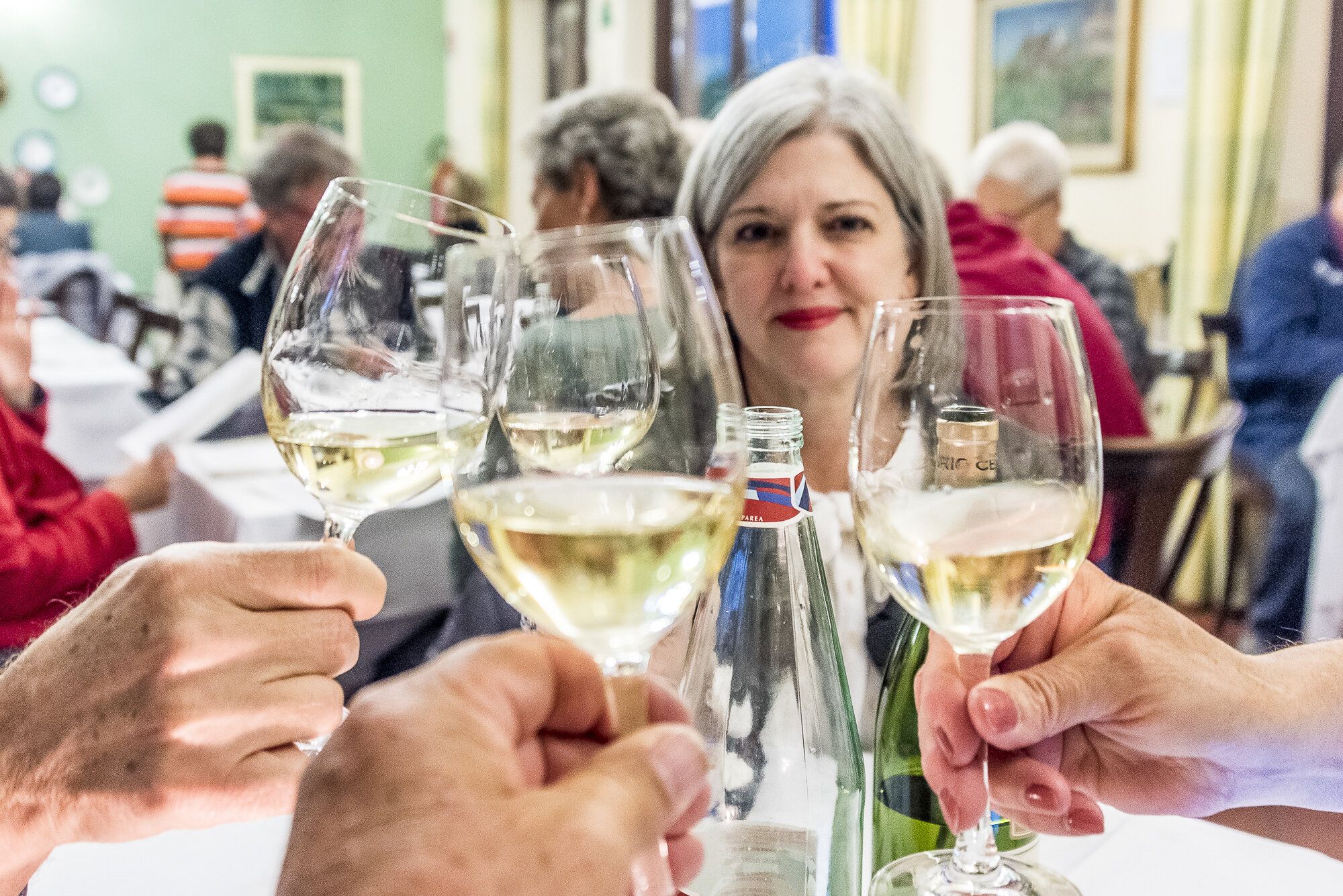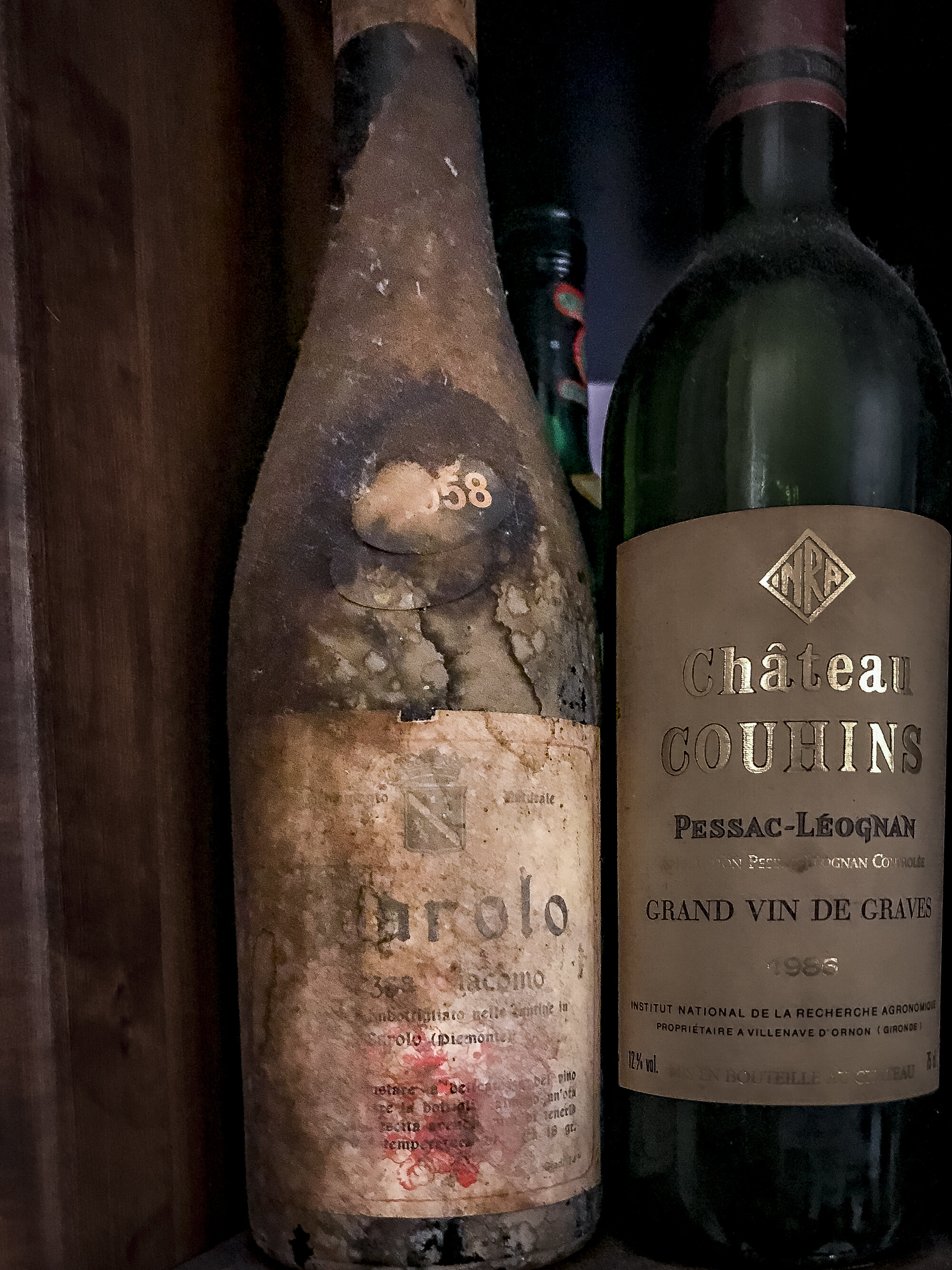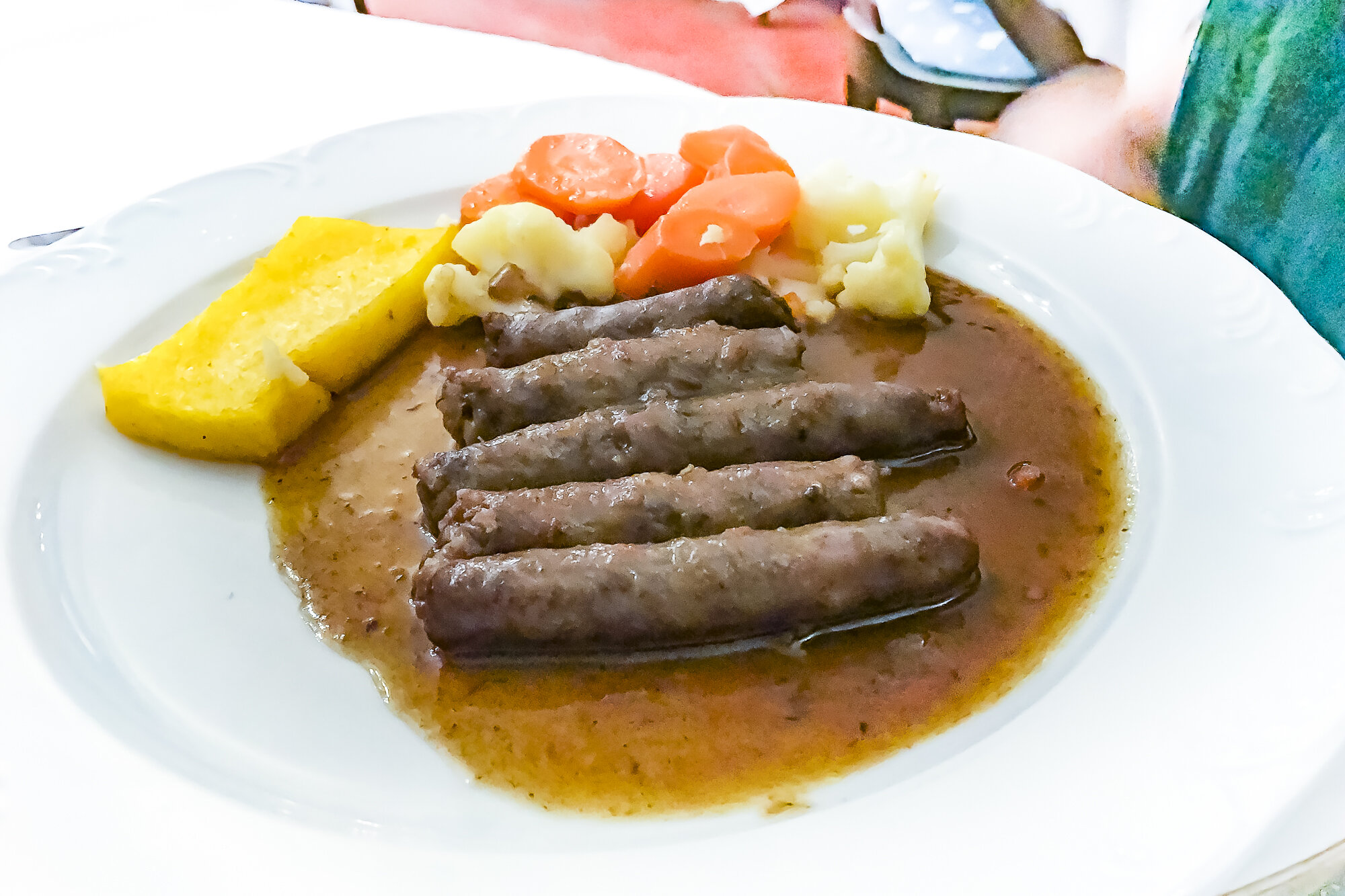Ahhh…Lago Maggiore. And, how about sitting on a pleasant veranda enjoying a scrumptious lunch on the Isola dei Pescatori (Fisherman’s Island). So pleasant. That’s exactly what we experienced on our visit to Stresa on the shore of Lago Maggiore.
In my last article, I shared our experiences in the town of Stresa, which sits on the western shores of Lago Maggiore. Clicking on the map thumbnail to the right will familiarize you with the location of Lago Maggiore in comparison to the other lakes making up the Italian Lake District.
Today, we will relax a bit as we dine at Ristorante Verbano. That’s the restaurant in the photo, below. It is part of the Albergo Vergano. ‘Albergo’ is another way to say ‘hotel’ in Italian.
The dining terrace sits just behind the wall with “Albergo Ristorante” painted on it
We had hoped to stay here at this exquisite hotel on the island, but alas, we waited a bit too long to book a room. See my suggestion at the end of this article for a view of this charming albergo.
Getting There
As Ristorante Verbano sits on an island, we must arrive by boat.
Here comes our ride to Isola dei Pescatori.
This boat dock is situated just in front of our hotel, as explained in last week’s article.
Watch your head Ellen as you descend to the passenger area.
That’s a boat much like ours racing beside us.
See the two white car ferries in the background? We will be riding on one of those in a couple of days as we make our way east through the Lake District to Lago di Garda.
We are getting closer to lunch time as we approach our island dock.
Of course, there is more than just dining on the island.
Eating There
As the menu suggests, we are at Ristorante Verbano, the ‘restaurant on the island’.
But, first things first. It is time for our customary wine toast!
Hmmm…so many choices for just one meal. As we are on an island in a lake, seafood seems appropriate. On the left are the fish dishes, and on the right, the meat dishes. Today’s menu is presented in four languages.
I’ve made my lunch selection. And that is none-other than I, your scribe, enjoying my wine.
As I turn to look at the lake, this is what I see. A beautiful day on a beautiful lake of clear water.
Our food has arrived! And here it is.
Ellen’s selection is whitefish with lemon and capers. The fish is just-caught-that-morning fresh and comes right from the Lago Maggiore.
Notice how the fish has been shaped into a cylinder to form a base for the zucchini…a nice presentation.
Here are our other selections, including risotto and a tasty cheese course.
As we leave Ristorante Verbano, we can see our destination for tomorrow…but that’s another story.
Here are just a few photos from our walk back to our boat that will take us back to Stresa.
Our assurance of a safe boat ride back to Stresa!
A Suggestion for Right Now
I have a suggestion that I think you will appreciate. Take a quick look at the short introductory video on the home page of Albergo Ristorante Verbano’s web site. It presents you with a most pleasant way to start your day…and it will most assuredly give you cause to head to Isola di Pesciatore.
Just click right here and enjoy: Albergo Ristorante Verbano
That was an excellent meal. The location, the nice sunny day, the ambiance, the service, the food, the drink…all worked together to provide us with a memorable experience. An experience that I hope you can enjoy someday for yourself.
Ciao for now,
Steve


















































